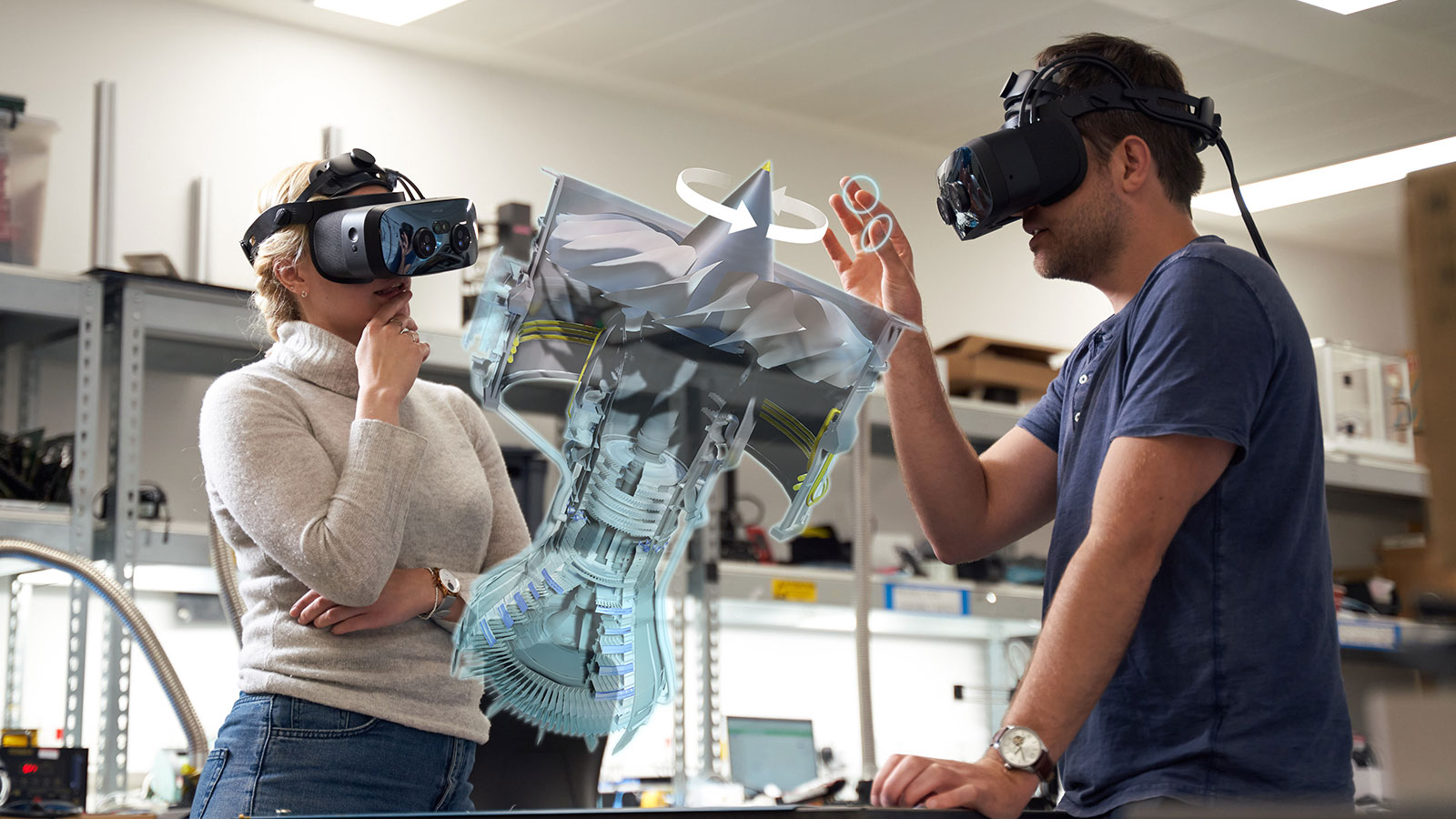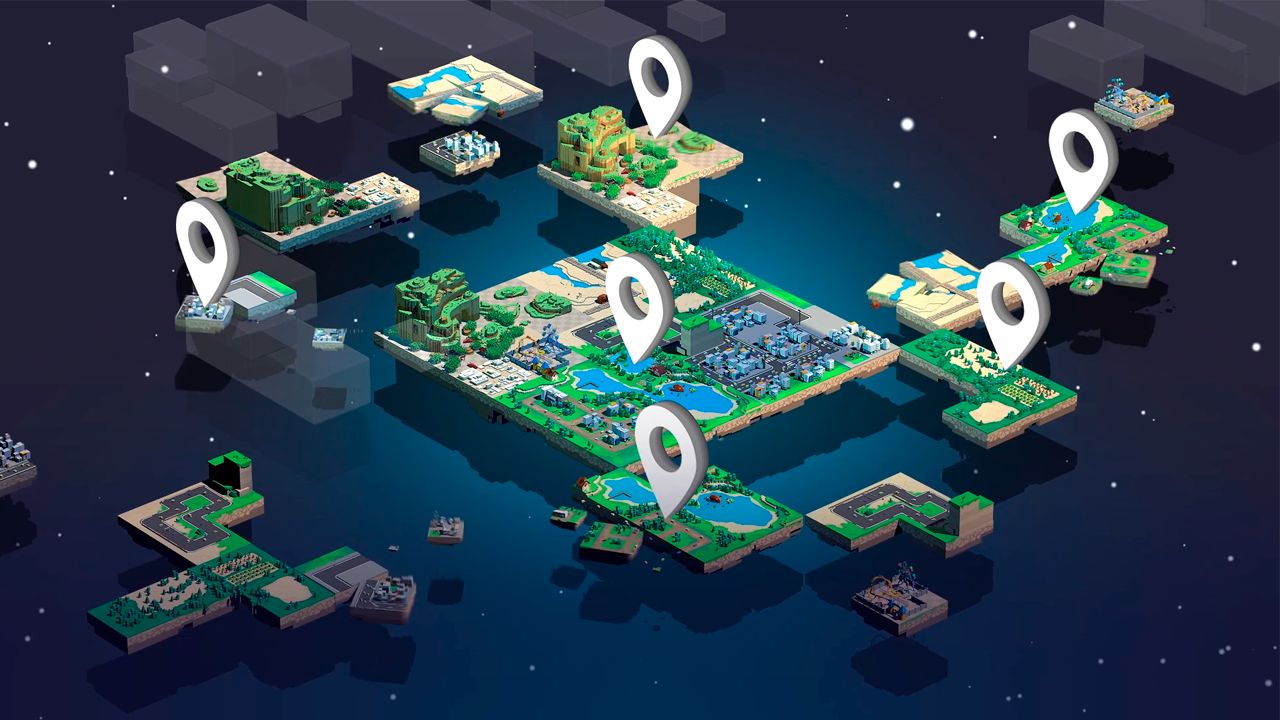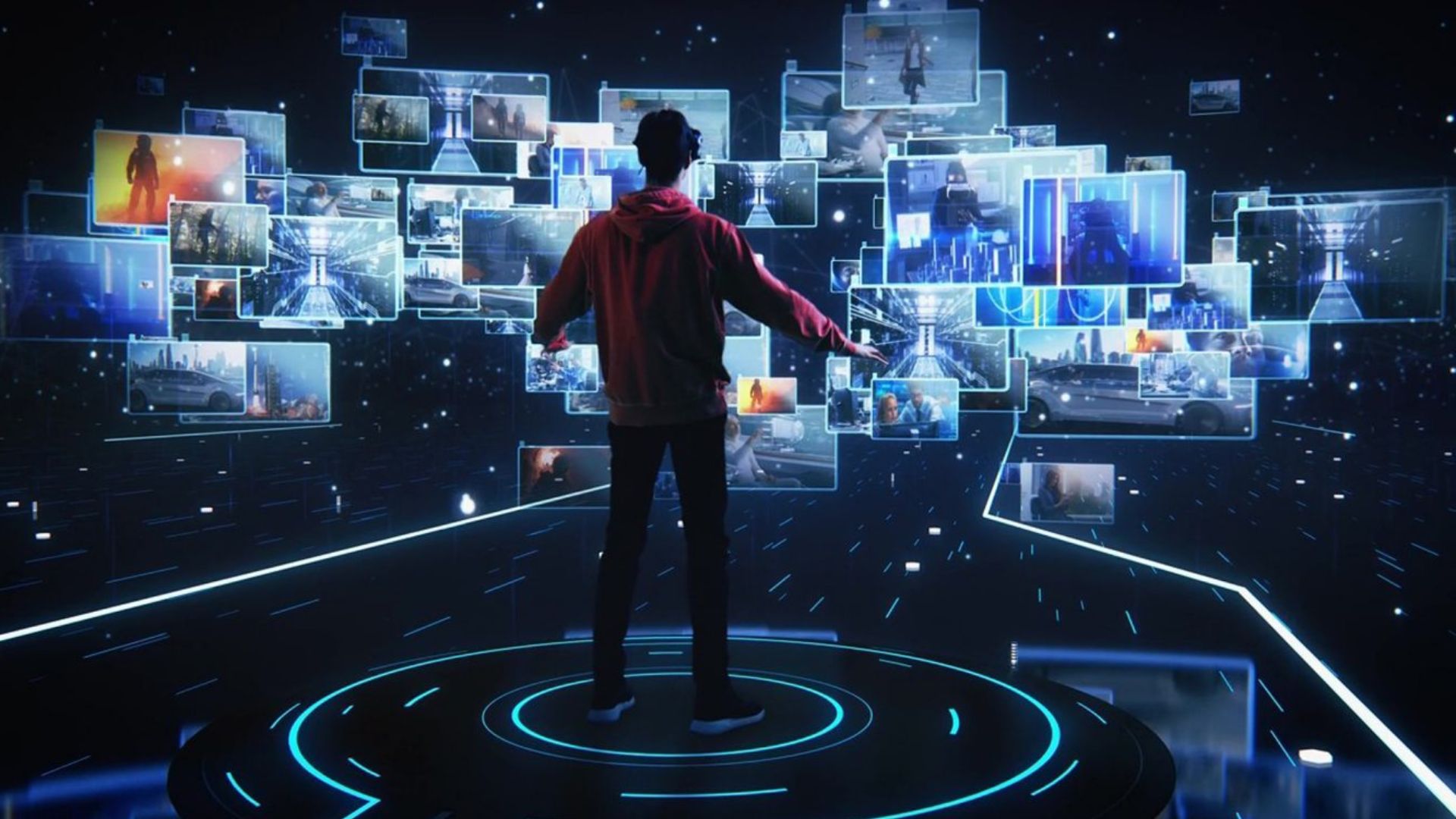Introduction
The concept of the metaverse has been gaining significant attention in recent years. Often depicted in science fiction novels and movies, the metaverse is a virtual reality space where individuals can interact with each other and the digital environment. With the advancement of technology, it has become increasingly plausible to create a fully immersive metaverse experience.
However, while the idea of a metaverse may seem appealing and exciting on the surface, there are several reasons why it may not be as beneficial as it appears. This article will explore some of the potential drawbacks of the metaverse and discuss the implications they may have on individuals and society as a whole.
It is important to note that the intention is not to completely dismiss the metaverse concept, but rather to encourage a critical examination of its potential impact. By considering these concerns, we can make informed decisions and take necessary precautions to ensure that the development of the metaverse aligns with our values and maintains a balance between the virtual and physical worlds.
In the following sections, we will delve into each of these concerns, exploring their potential implications and discussing the issues they may pose. By doing so, we can gain a deeper understanding of the potential pitfalls of the metaverse and the challenges that need to be addressed before embracing it on a larger scale.
Lack of Physical Interaction
One of the major drawbacks of the metaverse is the lack of physical interaction it offers. In a virtual reality environment, users interact with others through avatars and digital representations, but these experiences cannot fully replace genuine face-to-face interactions. Human connection is a vital aspect of socialization and emotional well-being, and the metaverse falls short in providing this essential element.
In the metaverse, people may spend hours immersed in a virtual world, detached from the physical reality and the people around them. This can lead to a sense of isolation and loneliness, as the deep connections formed through physical presence and non-verbal cues are absent. Additionally, the metaverse might encourage people to prioritize online relationships over offline ones, further perpetuating social disconnection.
Moreover, the lack of physical interaction can impact various aspects of our lives, such as personal relationships, education, and work. It may hinder the development of social skills, emotional intelligence, and empathy, which are traditionally acquired through face-to-face interactions. Additionally, engaging in physical activities and experiencing the tangible world are essential for our overall well-being, and the metaverse neglects this essential aspect of human life.
While virtual reality technologies aim to provide immersive experiences that simulate real-life situations, they still cannot replicate the richness and depth of physical encounters. The metaverse may offer convenience and accessibility, but it cannot replace the importance of personal connections and the sensory experiences offered by the physical world.
Therefore, it is crucial to consider the potential impact of the metaverse on human relationships and social dynamics. We must find a way to strike a balance between the virtual and physical realms, ensuring that the metaverse enhances rather than replaces the valuable interactions and experiences that occur in the physical world.
Loss of Privacy and Security
As we immerse ourselves in the metaverse, there are significant concerns surrounding privacy and security. When individuals enter a virtual reality space, they often provide personal information and create digital identities. This opens up the possibility of data breaches and unauthorized access to sensitive information.
In the metaverse, users may be required to share personal data, such as their name, age, location, and even their virtual activities and preferences. This collection and storage of personal data raise serious privacy concerns, as it could be vulnerable to hacking or misuse by malicious actors. Additionally, the use of AI technologies to track and monitor user behavior within the metaverse further amplifies the potential invasion of privacy.
Furthermore, the metaverse blurs the boundaries between the physical and digital worlds, making it challenging to distinguish between virtual experiences and real-life actions. This raises questions about the ownership and control of personal data and virtual assets. Who has access to our virtual identities, transactions, and interactions? How are our digital footprints being tracked and used? These are essential questions that need to be addressed to protect user privacy rights.
Additionally, cybercrimes and digital threats become even more prevalent in the metaverse. Just as we encounter online scams and hacks in our current digital landscape, the metaverse opens up a whole new realm for potential exploitation. Users may be subjected to identity theft, fraud, or even harassment within the virtual environment.
To ensure the privacy and security of users within the metaverse, strict regulations and robust security measures are necessary. It is crucial for developers and platform providers to prioritize data protection, encryption, and user consent. Additionally, educating users about the potential risks and empowering them with tools for managing their privacy settings can help mitigate these concerns.
By addressing privacy and security issues in the metaverse, we can create a safer and more trustworthy virtual environment that users can fully embrace without fear of compromising their personal information.
Escapism and Addiction
The metaverse offers a compelling escape from reality, allowing users to enter a virtual world where they can create new identities and engage in immersive experiences. While this aspect can provide entertainment and temporary relief from the stresses of everyday life, it also poses the risk of escapism and addiction.
In the metaverse, individuals may find solace in the virtual realm, preferring to spend excessive amounts of time in virtual environments rather than dealing with real-life responsibilities and challenges. This can lead to a loss of productivity, neglect of relationships, and a detachment from the tangible world. Moreover, individuals may develop an addiction to the metaverse, constantly seeking the next virtual thrill and losing touch with their true selves.
Similar to other forms of technology addiction, such as excessive social media use or video game addiction, the allure of the metaverse can have detrimental effects on mental health and well-being. Spending excessive time in a virtual world can lead to social isolation, lack of physical activity, and a distorted sense of reality. This, in turn, can exacerbate anxiety, depression, and other mental health issues.
Furthermore, addiction to the metaverse can impact real-life relationships and create a disconnect from the physical world. Users may become more engrossed in their virtual lives, neglecting personal connections, and missing out on real-life experiences and opportunities for personal growth.
To mitigate the risks of escapism and addiction in the metaverse, it is essential to promote a healthy balance between virtual and physical experiences. It requires individuals to be mindful of their metaverse usage and set limits on their screen time. Additionally, developers and platform providers should incorporate features that encourage breaks, promote moderation, and provide resources for addiction support if needed.
Ultimately, individuals must recognize the potential dangers of excessive escapism and take proactive measures to maintain a healthy relationship with the metaverse, ensuring that it remains a tool for entertainment and connection rather than a substitute for real-life engagement.
Social Inequality and Exclusion
The metaverse has the potential to create new forms of social inequality and exclusion if not carefully managed. While the concept of a virtual reality world may seem inclusive and accessible to all, there are several factors that can contribute to social disparities within the metaverse.
Firstly, access to the metaverse requires resources, such as high-end devices, stable internet connections, and subscription fees for virtual platforms. These barriers can exclude individuals from lower socioeconomic backgrounds who may not have the means to participate fully in the metaverse. This digital divide can further exacerbate existing inequalities, as those unable to access or afford the metaverse miss out on its social, educational, and economic opportunities.
Secondly, within the metaverse itself, there can be disparities in wealth and virtual assets. Just like in the real world, individuals with more financial resources may have an advantage in acquiring virtual properties, rare items, or exclusive experiences. This can create a social hierarchy within the metaverse, with a concentration of power and influence among the privileged few.
Moreover, the metaverse may perpetuate societal biases and discrimination. Users have the freedom to create their virtual identities and avatars, but this can result in the amplification of real-world prejudices. Discrimination based on characteristics such as race, gender, or physical appearance can manifest in the virtual space, leading to social exclusion and marginalization.
To address these issues, it is important for developers and platform providers to prioritize inclusivity and accessibility in the design and implementation of the metaverse. Efforts should be made to bridge the digital divide and ensure that individuals from all socioeconomic backgrounds can participate fully. Additionally, measures should be put in place to prevent the concentration of wealth and power, and to discourage discrimination within the virtual world.
Moreover, fostering a culture of inclusivity and diversity within the metaverse can promote a sense of belonging and reduce social exclusion. This can be achieved through the implementation of policies that encourage respectful behavior, moderation of hate speech, and the promotion of diverse virtual communities.
By addressing issues of social inequality and exclusion in the metaverse, we can strive to create a virtual reality space that is equitable, inclusive, and reflective of the values we uphold in the physical world.
Ethical Concerns with AI-Avatars
As the metaverse evolves, AI-driven avatars are becoming increasingly prevalent. These avatars use artificial intelligence algorithms to mimic human behavior, interact with users, and even make autonomous decisions. While this technological advancement offers exciting possibilities, it also raises ethical concerns that need to be addressed.
One of the key ethical concerns with AI-avatars is the potential for deception and manipulation. As AI algorithms become more sophisticated, avatars can be designed to mimic real humans in appearance, speech patterns, and emotions. This raises questions about the authenticity of interactions within the metaverse. Users may not be aware that they are interacting with AI-driven avatars, leading to potentially deceptive and manipulative experiences.
Furthermore, AI-avatars may gather personal data and user preferences to enhance user experiences. While this can be beneficial in terms of personalization and tailored content, it also raises issues regarding privacy and informed consent. Users may unknowingly provide sensitive information to AI-avatars, which could then be used for targeted advertising, data mining, or other purposes without their explicit permission.
Additionally, there are concerns regarding the ethical treatment of AI-avatars. As these avatars become more lifelike, the lines between programming and consciousness can become blurred. This raises questions about their rights, moral obligations towards them, and the potential for exploitation or mistreatment within the metaverse.
Moreover, the biases present in AI algorithms pose a significant ethical concern. If AI-avatars are built upon biased datasets or flawed algorithms, they can perpetuate discrimination and reinforce societal biases within the virtual environment. This can result in unfair treatment, prejudice, and marginalization of individuals based on their race, gender, or other characteristics.
To address these ethical concerns, transparency and accountability are crucial. Developers and platform providers must clearly disclose when users are interacting with AI-driven avatars, ensuring informed consent and promoting honest interactions. Additionally, there needs to be a focus on data privacy, ensuring that user data is treated with respect and used responsibly.
In terms of biased algorithms, efforts should be made to minimize bias in AI systems, implement fairness checks, and regularly audit the algorithms to ensure they are not perpetuating discrimination. Ethical guidelines and regulations should be developed to safeguard the rights and well-being of AI-avatars.
By addressing these ethical concerns, we can ensure that AI-driven avatars in the metaverse are developed and deployed responsibly, enhancing the user experience while upholding fundamental ethical principles.
Risk of Exploitation and Manipulation
As the metaverse grows in popularity, there is an increasing risk of exploitation and manipulation within its virtual environment. The power dynamics and lack of regulation can make users vulnerable to various forms of abuse and deceptive practices.
One of the primary concerns is the potential for financial exploitation. In the metaverse, users can engage in virtual economies, buying and selling virtual goods and services. However, this opens up opportunities for scams, fraud, and unfair practices. Unscrupulous individuals may deceive others into purchasing fake or overpriced virtual items, leading to financial loss and disillusionment.
Furthermore, the metaverse can be a breeding ground for manipulation and misinformation. With the ability to create and disseminate content within the virtual world, there is a risk of spreading false information and misleading narratives. This can lead to the manipulation of public opinion, the creation of echo chambers, and the amplification of harmful ideologies.
In addition, the metaverse can become a platform for grooming and exploitation. Predators may disguise their true identities and manipulate vulnerable users, particularly children or individuals who are more susceptible to grooming. This highlights the crucial need for safeguards and measures to protect users, particularly the most vulnerable members of society.
Moreover, the metaverse can be prone to cyberbullying and harassment. Anonymity and the ease of creating multiple identities can enable individuals to engage in harmful behaviors without consequence. This can lead to emotional distress, psychological harm, and a hostile environment within the virtual world.
To address the risk of exploitation and manipulation, it is vital to establish clear guidelines and regulations within the metaverse. Platform providers should implement measures to verify user identities, combat fraud, and detect and remove abusive content. Education and awareness programs should also be implemented to empower users to recognize and report exploitation and manipulation.
Additionally, fostering a culture of digital empathy and responsible online behavior is crucial. Encouraging users to treat one another with respect, promoting positive social dynamics, and providing resources for support and intervention can contribute to a safer and more ethical metaverse.
By addressing these risks and taking proactive measures, we can strive to create a metaverse that is free from exploitation, manipulation, and harmful practices.
Health and Well-being Implications
The metaverse, with its immersive and sedentary nature, can have significant implications for the health and well-being of individuals who engage with it. Spending excessive time in virtual reality environments can lead to a range of physical and mental health challenges.
Physically, prolonged use of the metaverse can contribute to a sedentary lifestyle. Users may spend hours sitting or standing in one place, neglecting physical activity and movement. This lack of exercise can lead to various health issues, including weight gain, cardiovascular problems, and musculoskeletal disorders.
Additionally, excessive screen time and prolonged exposure to virtual reality can strain the eyes and vision. Eye fatigue, dryness, and discomfort are common issues that can arise from extended periods of metaverse use. Furthermore, the impact of prolonged exposure to blue light emitted by screens can disrupt sleep patterns and affect overall well-being.
Mentally, the metaverse can have implications for mental health. Immersion in virtual reality environments can blur the boundaries between fantasy and reality, potentially impacting one’s sense of identity and perception of the physical world. This can lead to feelings of dissociation or detachment from reality.
Moreover, the constant stimuli and sensory overload in the metaverse can contribute to anxiety and stress. Virtual social interactions and the pressure to maintain a virtual presence can also lead to feelings of social comparison, FOMO (fear of missing out), and a sense of inadequacy.
Furthermore, the metaverse may contribute to addictive behaviors and the development of technology dependency. Users may find it difficult to disconnect from the constant stimulation and the alternate reality offered by the metaverse, leading to an unhealthy preoccupation and a neglect of real-life responsibilities and relationships.
It is crucial to approach the metaverse mindfully and prioritize self-care. Setting limits on metaverse usage, taking regular breaks, and engaging in physical activity are essential for maintaining a healthy balance with the virtual world. Being aware of one’s mental and emotional well-being and seeking support when needed is also crucial for mitigating potential health risks.
Developers and platform providers should also take responsibility for user well-being by incorporating features that encourage breaks, promote physical movement, and provide educational resources on healthy metaverse engagement.
By recognizing the potential health and well-being implications of the metaverse and taking proactive measures to address them, we can ensure that individuals can enjoy the benefits of the virtual world without compromising their overall well-being.
Environmental Impact
The rise of the metaverse has significant implications for the environment. While it offers virtual experiences that seem detached from the physical world, the metaverse still requires substantial energy and resources to function, which can contribute to environmental degradation.
One of the primary concerns is the energy consumption of the hardware required for virtual reality experiences. Producing and operating high-performance devices, such as VR headsets and powerful computers, require significant amounts of energy and contribute to greenhouse gas emissions. Additionally, these devices often have a short lifespan, leading to electronic waste and further environmental impact.
Furthermore, the data centers and servers that support the metaverse require substantial amounts of energy to operate and maintain. Storing and processing vast amounts of data, running complex algorithms, and maintaining a seamless user experience all contribute to the energy footprint of the metaverse. Without sustainable and energy-efficient infrastructure, the metaverse can become a significant source of carbon emissions.
Additionally, virtual economies within the metaverse can have an environmental impact. The production and consumption of virtual goods and digital assets can contribute to resource depletion and environmental degradation. Users may constantly seek new virtual items, leading to increased energy and material consumption in their production and distribution.
Addressing the environmental impact of the metaverse requires a multi-faceted approach. First and foremost, the development and use of sustainable and energy-efficient technology are essential. Hardware manufacturers and platform providers should prioritize energy-saving features, design for longevity, and consider the life cycle environmental impact of the devices and infrastructure.
Renewable energy sources should be utilized to power the data centers and servers that support the metaverse. Investing in clean energy options such as solar and wind can help minimize the carbon footprint associated with the virtual reality space.
Furthermore, promoting sustainable practices within the virtual economy is crucial. Encouraging users to consider the environmental impact of virtual purchases, promoting reuse and recycling of digital assets, and supporting initiatives for carbon offsetting can help reduce the ecological footprint of the metaverse.
Education and awareness also play a vital role in addressing the environmental impact of the metaverse. Informing users about the energy requirements and ecological consequences of virtual reality experiences can foster responsible behaviors and encourage environmentally conscious choices.
By adopting sustainable practices, developing energy-efficient technologies, and promoting environmental awareness, we can strive to minimize the environmental impact of the metaverse while still enjoying the benefits it offers.
Economic Disruption and Job Loss
The rapid expansion of the metaverse and virtual reality technologies has the potential to disrupt traditional economies and lead to job loss in certain sectors. As virtual experiences become more immersive and appealing, individuals may opt for virtual interactions and activities over real-life services and experiences, resulting in a significant shift in consumer behavior.
One of the main areas where economic disruption is expected is in the entertainment and leisure industry. Virtual reality experiences and metaverse platforms provide users with a diverse range of entertainment options, such as virtual concerts, immersive gaming, and virtual tourism. As these experiences grow in popularity, the demand for traditional forms of entertainment and leisure activities may decline, resulting in reduced demand for related goods and services, and potentially leading to job losses in these sectors.
Similarly, the metaverse has the potential to reshape the retail landscape. As digital marketplaces within the metaverse thrive, users may opt for virtual shopping experiences rather than physical retail stores. This shift towards virtual commerce could lead to the closure of traditional brick-and-mortar shops, impacting the livelihoods of retail workers and resulting in job displacement.
Moreover, automation and AI technologies within the metaverse may lead to job losses in sectors where tasks can be automated or performed by AI avatars. For example, customer service roles, virtual assistants, and administrative positions could be replaced by AI-driven algorithms and virtual entities, resulting in unemployment for individuals who previously held these jobs.
However, it is important to note that while certain sectors may experience job losses, the metaverse also presents new economic opportunities. As the metaverse expands, there will be a demand for content creators, virtual experience designers, developers, and individuals with expertise in virtual reality technologies. The virtual economy will give rise to new job roles and entrepreneurial ventures that cater to the unique needs and demands of the metaverse.
To mitigate the negative economic impacts of the metaverse, there needs to be a focus on reskilling and upskilling the workforce. Providing training and support for individuals who are displaced from traditional industries can help them transition into new roles within the metaverse or other emerging industries.
Furthermore, fostering innovation and entrepreneurship within the metaverse can create new economic opportunities and drive job creation. Encouraging the development of virtual businesses and digital startups can help mitigate some of the potential job losses and contribute to economic growth in the metaverse era.
By acknowledging the potential economic disruptions and taking proactive measures to address job displacement, we can ensure a smoother transition and help individuals adapt to the changing economic landscape brought about by the metaverse.
Conclusion
The metaverse presents an exciting and innovative concept that has the potential to revolutionize how we interact, connect, and experience virtual environments. However, it is crucial to critically assess the potential drawbacks and implications that come with embracing the metaverse on a larger scale.
We have explored various concerns surrounding the metaverse, including the lack of physical interaction, loss of privacy and security, the risk of escapism and addiction, social inequality and exclusion, ethical concerns with AI-avatars, the risk of exploitation and manipulation, health and well-being implications, environmental impact, and economic disruption and job loss.
While these concerns highlight the potential challenges and risks associated with the metaverse, it is important to approach them with a balanced perspective. The metaverse also offers unprecedented opportunities for connectivity, creativity, and innovation. It can bridge distances, provide immersive experiences, and unlock new economic possibilities.
To embrace the metaverse responsibly, we must prioritize the values of inclusivity, privacy, security, and well-being. Developers and platform providers must ensure transparent and ethical practices, taking measures to protect user data, prevent exploitation, and promote a safe and supportive virtual environment.
Users, too, should approach the metaverse mindfully, setting boundaries, maintaining physical and mental well-being, and being aware of the potential risks and challenges that may arise from excessive engagement.
Furthermore, collaboration between stakeholders, including policymakers, industry leaders, and user communities, is crucial to address the ethical, regulatory, and societal considerations associated with the metaverse. By working together, we can create a metaverse that enhances our lives while upholding fundamental values and addressing potential pitfalls.
As the metaverse continues to evolve, it is essential to remain vigilant, critically evaluate its impact, and adapt our approaches to ensure that the benefits outweigh the risks. By doing so, we can navigate the metaverse era with awareness, responsibility, and the aspiration to create a more connected, inclusive, and sustainable virtual reality experience.

























